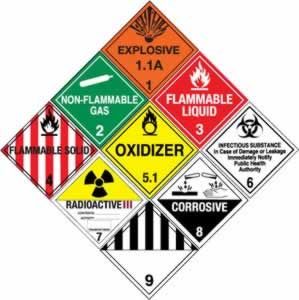Chemstores provides shipping and receiving support for samples and chemicals that fall under the Canadian Transportation of Dangerous Goods (TDG) Regulation and the International Air Transport Authority (IATA) Regulation.
Overview of Chemstores Shipping Process:
- The Dispensing Chemist is certified to ship dangerous goods by ground and air and acts as the consignor these packages
- Contact the Dispensing Chemist to arrange a shipping date at least one day in advance and to identify any special shipping/packaging/documentation requirements
- Prepare packaging but do no seal the package (the consignor must inspect the package prior to shipping it and will help finish the packaging process)
- Print and fill-out a Chemstores Packing Slip and Shipping and Courier Expenses Authorization (Note: at present, the budget holder needs to sign the expense authorization)
- Bring the documentation along with the package(s) to Chemstores
- Dispensing Chemist will review the packaging and documentation, fill out a waybill, weigh the package, and add hazard stickers as necessary
- The Dispensing Chemist will transfer the package to the courier sign as consignor

Shipping Tips:
- In line with UNBC's green university mandate, Chemstores retains a number recycled blue ice shipping block and insulated shipping containers, and these shipping materials are available for free to researchers.
- Estimating the necessary volume of dry ice can be difficult. There are various guides online that can be used to estimate the amount needed.
- Packages shipped to other countries or that contain high-risk materials may require several days to prepare.
- Packaging should prevent damage to contents and prevent the contents from leaking if there is damage.
- For perishable or sensitive materials, the package should be shipped early in the week to ensure that it is received and processed on a business day (ie., to avoid the package being held at a depot over a weekend).